-
A numerical study of Mullins softening effects on mode I crack propagation in viscoelastic solids Int. J. Damage Mech. (IF 4.0) Pub Date : 2024-11-11 Nan Hou, Qiang Guo, Fahmi Zaïri, Huixia Xu, Ning Ding
This paper presents a finite element analysis of steady-state crack propagation in viscoelastic soft solids exhibiting Mullins softening. A cohesive-zone model is employed to simulate the localized processes at the tip of a Mode I crack in materials governed by viscoelastic behavior and damage-induced Mullins effects. The study numerically evaluates the intrinsic dissipation characteristics of typical
-
Experimental and theoretical model study on grouting reinforcement effect of fractured rock mass Int. J. Damage Mech. (IF 4.0) Pub Date : 2024-11-08 Hui Wang, Hairong Yu, Xiaotong Zhang, Hongyu Zhuo, Jitao Jia, Haosong Wang, Hongyuan Huai
The mechanical properties of fractured rock mass have an important influence on the safety and stability of underground engineering. Grouting is a common way to reinforce fractured rock mass. The uniaxial compression tests of red sandstone specimens with different prefabricated crack inclination angles before and after grouting were carried out. Based on the load-deformation data and synchronous image
-
Peridynamics simulations of the damage of reinforced concrete structures under radial blasting Int. J. Damage Mech. (IF 4.0) Pub Date : 2024-11-08 Chuangxiang Shi, Songxuan Zhang, Xiaoliang Zhang, Shaofan Li
Concrete is prone to damage under explosive loads, which can cause a large number of casualties and property losses. The concrete fragmentation process during explosion is transient and dynamic, and the experimental measurement of such events is difficult and risky to conduct, and the intermediate explosion process is difficult to observe in the experimental tests. Therefore, the numerical simulation
-
Three-dimensional numerical study on reservoir sediment flushing through an initially covered bottom tunnel Eng. Appl. Comput. Fluid Mech. (IF 5.9) Pub Date : 2024-10-30 Huan Xu, Zhixian Cao
Sediment flushing through bottom tunnels has been widely applied in engineering practice to alleviate reservoir sedimentation. However, there is limited understanding of whether flushing can be acc...
-
An integrated CFD and machine learning analysis on pilots in-flight thermal comfort and productivity Eng. Appl. Comput. Fluid Mech. (IF 5.9) Pub Date : 2024-10-30 Xueren Li, Ziqi Chen, Yin Tang, Yihuan Yan, Bichen Shang, Shengjin Xu, Jiyuan Tu
In the cockpit, minimising the pilots' thermal discomfort due to solar exposure while ensuring clear visibility is essential. This study numerically examined the solar radiation effect on thermal f...
-
A novel continuum damage evolution model based on the concept of damage driving force for unidirectional composites Int. J. Damage Mech. (IF 4.0) Pub Date : 2024-10-31 Tianhong Yu, Wenxuan Qi, Elena Sitnikova, Shuguang Li
A novel damage evolution model for unidirectional (UD) composites is established in this paper in the context of continuum damage mechanics (CDM). It addresses matrix cracking and it is to be applied along with the damage representation established previously. The concept of damage driving force is employed based on the Helmholtz free energy. It is shown that the damage driving force can be partitioned
-
Size effect modellings of axial compressive failure of RC columns at low temperatures Int. J. Damage Mech. (IF 4.0) Pub Date : 2024-10-25 Liu Jin, Bo Lu, Wenxuan Yu, Xiuli Du
This paper applied a thermal-mechanical sequential coupled mesoscopic simulation method to explore the axial compression performance and the corresponding size effect of Reinforced Concrete Columns confined by Stirrups (i.e., RCCS) at low temperatures, with considering the interaction between concrete meso-components and steel bars as well as the low-temperature effect of mechanical parameters. Based
-
Study on the creep constitutive model of layered rockconsidering anisotropic and damage factors after hightemperature exposure Int. J. Damage Mech. (IF 4.0) Pub Date : 2024-10-22 Lubo Meng, Shan Zhang, Tianbin Li, Tianyi Liu, Haoyu Li
The failure of layered rock after high temperature exposure is a major concern in deep underground engineering projects. This paper proposes an improved Nishihara creep constitutive model that considers damage factors and the bedding angle, which overcomes the shortcomings of the deviation in the description of the conventional Nishihara model in the acceleration stage. The constitutive model is verified
-
A damage-based analytical model to evaluate seepage pressure effect on rock macro mechanical behaviors from the perspective of micro-fracture Int. J. Damage Mech. (IF 4.0) Pub Date : 2024-10-21 Yuezong Yang, Zhushan Shao, Nannan Zhao, Kui Wu
The deterioration of rock material properties induced by seepage pressure is a serious danger to the stability of geotechnical engineering. The formation and propagation of microcracks is the primary cause of rock macro failure. This work proposes an damage-based analytical model to assess the impact of seepage pressure on the macro mechanical behaviors of rocks from the standpoint of micro fracture
-
Accumulated crystal plasticity dissipation energy driven continuum damage two-scale model for fretting fatigue initiation life Int. J. Damage Mech. (IF 4.0) Pub Date : 2024-10-17 Yuan Fang, Xu Yazhou
Fretting fatigue often occurs in the interfaces between components, subjected to complex multi-axial load states and high stress gradients at the contact edge region. For the prediction of fretting fatigue crack initiation and in-depth understanding of the crack initiation mechanism, it is essential to investigate the damage mechanisms across various scales and explore the underlying scale coupling
-
Artificial neural networking for computational assessment of ternary hybrid nanofluid flow caused by a stretching sheet: implications of machine-learning approach Eng. Appl. Comput. Fluid Mech. (IF 5.9) Pub Date : 2024-10-14 Imad Khan, M. Waleed Ahmed Khan
Researchers are mainly interested in using soft computing artificial intelligence (AI) methods due to their broad applications in analysis, modelling and simulations. Backpropagation neural network...
-
Insights into the relationship between particulate flow characteristics and local erosion behaviour under waterjet: The role of particle-fluid-surface interaction Eng. Appl. Comput. Fluid Mech. (IF 5.9) Pub Date : 2024-10-09 Kai Wang, Chenpei Li, Zhenjiang Wang, Jinling Lu, Yanhui Li, Yueshe Wang
In this study, the erosion characteristics of eutectic high entropy alloy under the liquid–solid two-phase flow is investigated by a coupled numerical-experimental method, in order to reveal the in...
-
Studying a droplet impaction on a vibrating porous medium Eng. Appl. Comput. Fluid Mech. (IF 5.9) Pub Date : 2024-10-03 Eslam Ezzatneshan, Reza Sadraei, Reza Goharimehr
This study investigates the influence of vibration on droplet dynamics when a droplet impacts a three-dimensional (3D) structured porous medium, focusing on intrinsic properties such as porosity an...
-
The effect of relative position on the motion and interactions of particle sedimentation under gravity in a finite-width vertical channel Eng. Appl. Comput. Fluid Mech. (IF 5.9) Pub Date : 2024-10-03 Tao Guo (郭涛), Bang Yan (岩棒), Xintao Lu (鲁鑫涛), Zhumei Luo (罗竹梅)
Understanding the settling behaviour of particles and the interactions between fluid and particles in channelled fluids is crucial for various natural and industrial processes. The research present...
-
Rapidly Rotating Magnetohydrodynamics and the Geodynamo Annu. Rev. Fluid Mech. (IF 25.4) Pub Date : 2024-10-01 Emmanuel Dormy
The problem of the geodynamo is simple to formulate (Why does the Earth possess a magnetic field?), yet it proves surprisingly hard to address. As with most geophysical flows, the fluid flow of molten iron in the Earth's core is strongly influenced by the Coriolis effect. Because the liquid is electrically conducting, it is also strongly influenced by the Lorentz force. The balance is unusual in that
-
Vortex-Induced Vibration of Flexible Cylinders in Cross-Flow Annu. Rev. Fluid Mech. (IF 25.4) Pub Date : 2024-09-30 Francisco Huera-Huarte
This review provides a comprehensive analysis of the literature on vortex-induced vibration (VIV) of flexible circular cylinders in cross-flow. It delves into the details of the underlying physics governing the VIV dynamics of cylinders characterized by low mass damping and high aspect ratio, subject to both uniform and shear flows. It compiles decades of experimental investigations, modeling efforts
-
Turbulence from an Observer Perspective Annu. Rev. Fluid Mech. (IF 25.4) Pub Date : 2024-09-30 Tamer A. Zaki
Turbulence is often studied by tracking its spatiotemporal evolution and analyzing the dynamics of its different scales. The dual to this perspective is that of an observer who starts from measurements, or observations, of turbulence and attempts to identify their back-in-time origin, which is the foundation of data assimilation. This back-in-time search must contend with the action of chaos, which
-
Experimental study on the mechanical properties of red sandstone with fractures under different loading rates Int. J. Damage Mech. (IF 4.0) Pub Date : 2024-09-30 Hui Wang, Zhichao Xu, Hongyuan Huai, Yunteng Yin, Jiacong Zeng, Zhihao Du, Hang Zhou
In order to study the effects of crack inclination angle and loading rate on rock mechanical properties, creep characteristics, and failure characteristics. Taking homogeneous red sandstone with different fracture angles as the research object, uniaxial compression tests and uniaxial compression creep tests were conducted at different loading rates. The results showed that under the same fracture angle
-
The effectiveness of impulsive jet fans ventilation on CO concentration in closed car park Eng. Appl. Comput. Fluid Mech. (IF 5.9) Pub Date : 2024-09-26 Mohaned Hossam Omar, Mahmoud Mohamed Kamal, Hamdy Ahmed Abotaleb
As there is a risk of CO contamination by vehicles running inside the car park. This research was initiated with the objective of assessing jet fans' impulsive ventilation “IV” performance and stud...
-
A rapid and efficient method for flash flood simulation based on deep learning Eng. Appl. Comput. Fluid Mech. (IF 5.9) Pub Date : 2024-09-26 Xinying Wang, Miao Xiao, Yi Liu, Jun Guo, Yangyang Qin, Yunkang Zhang
Among the various natural disasters, the death caused by flash flood is the highest. Recently, the combination of deep learning methods and hydrodynamic models has shown superior performance in the...
-
A novel semi-explicit numerical algorithm for efficient 3D phase field modelling of quasi-brittle fracture Comput. Methods Appl. Mech. Eng. (IF 6.9) Pub Date : 2024-09-27 Lu Hai, Hui Zhang, Peter Wriggers, Yu-jie Huang, Ye Feng, Philipp Junker
Phase field models have become an effective tool for predicting complex crack configurations including initiation, propagation, branching, intersecting and merging. However, several computational issues have hindered their utilisation in engineering practice, such as the convergence challenge in implicit algorithms, numerical stability issues in explicit methods and significant computational costs
-
Physics-Informed Holomorphic Neural Networks (PIHNNs): Solving 2D linear elasticity problems Comput. Methods Appl. Mech. Eng. (IF 6.9) Pub Date : 2024-09-27 Matteo Calafà, Emil Hovad, Allan P. Engsig-Karup, Tito Andriollo
We propose physics-informed holomorphic neural networks (PIHNNs) as a method to solve boundary value problems where the solution can be represented via holomorphic functions. Specifically, we consider the case of plane linear elasticity and, by leveraging the Kolosov–Muskhelishvili representation of the solution in terms of holomorphic potentials, we train a complex-valued neural network to fulfill
-
AsPINN: Adaptive symmetry-recomposition physics-informed neural networks Comput. Methods Appl. Mech. Eng. (IF 6.9) Pub Date : 2024-09-27 Ziti Liu, Yang Liu, Xunshi Yan, Wen Liu, Shuaiqi Guo, Chen-an Zhang
Physics-informed neural networks (PINNs) have shown promise for solving partial differential equations (PDEs). However, PINNs’ loss, the regularization terms, can only guarantee that the prediction results conform to the physical constraints in the average sense, which results in PINNs’ inability to strictly adhere to implied physical laws such as conservation laws and symmetries. This limits the optimization
-
Adaptive optimization of isogeometric multi-patch discretizations using artificial neural networks Comput. Methods Appl. Mech. Eng. (IF 6.9) Pub Date : 2024-09-27 Dany Ríos, Felix Scholz, Thomas Takacs
In isogeometric analysis, isogeometric function spaces are employed for accurately representing the solution to a partial differential equation (PDE) on a parameterized domain. They are generated from a tensor-product spline space by composing the basis functions with the inverse of the parameterization. Depending on the geometry of the domain and on the data of the PDE, the solution might not have
-
Experimental analysis of extrusion-based additive manufacturing process of bio-composite NiTi alloy Int. J. Damage Mech. (IF 4.0) Pub Date : 2024-09-27 Abel Cherouat, Thierry Barriere, Hong Wang
In this study, a comprehensive investigation was conducted to explore the material extrusion process of NiTi shape-memory alloy-based bio-composite polymeric matrix. Polylactic acid PLA+ Stearic Acid polymeric matrix are performed in order to develop an environmentally friendly process for manufacturing feedstocks with [Formula: see text] nickel-titanium powders for employed in the 3D printing process
-
Assessment and improvement of rainfall environment reproduction for climatic wind tunnel Eng. Appl. Comput. Fluid Mech. (IF 5.9) Pub Date : 2024-09-26 Yingchao Zhang, Jinji Li, Zhe Zhang, Weiping Yuan, Jialong Zhou, Chun Shen, Chengchun Zhang
The climatic wind tunnel (CWT) is widely recognised as the optimal experimental environment for studying vehicle rainwater management, while the rainfall field generated by the CWT for vehicles may...
-
An incremental learning framework for pipeline weld crack damage identification and leakage rate prediction Eng. Appl. Comput. Fluid Mech. (IF 5.9) Pub Date : 2024-09-26 Jing Huang, Zhifen Zhang, Yanlong Yu, Yongjie Li, Shuai Zhang, Rui Qin, Ji Xing, Wei Cheng, Guangrui Wen, Xuefeng Chen
The weld crack leakage due to stress concentration and external load is a significant safety risk in pressure pipelines. Microstructural variations and dynamic propagation lead to unpredictable cha...
-
Towards a new paradigm in intelligence-driven computational fluid dynamics simulations Eng. Appl. Comput. Fluid Mech. (IF 5.9) Pub Date : 2024-09-25 Xinhai Chen, Zhichao Wang, Liang Deng, Junjun Yan, Chunye Gong, Bo Yang, Qinglin Wang, Qingyang Zhang, Lihua Yang, Yufei Pang, Jie Liu
Computational Fluid Dynamics (CFD) plays a crucial role in investigating new physical phenomena and exploring the principles of fluid mechanics. However, CFD numerical methods often face the challe...
-
Physicochemical Hydrodynamics of Particle Diffusiophoresis Driven by Chemical Gradients Annu. Rev. Fluid Mech. (IF 25.4) Pub Date : 2024-09-26 Jesse T. Ault, Sangwoo Shin
Chemical gradients, the spatial variations in chemical concentrations and components, are omnipresent in environments ranging from biological and environmental systems to industrial processes. These thermodynamic forces often play a central role in driving transport processes taking place in such systems. This review focuses on diffusiophoresis, a phoretic transport phenomenon driven by chemical gradients
-
Freezing and Capillarity Annu. Rev. Fluid Mech. (IF 25.4) Pub Date : 2024-09-26 Axel Huerre, Christophe Josserand, Thomas Séon
Ice structures such as accretion on airplanes, wires, or roadways; ice falls; ice stalactites; frozen rivers; and aufeis are formed by the freezing of capillary flows (drops, rivulets, and films). To understand these phenomena, a detailed exploration of the complex coupling between capillary flow and solidification is necessary. Among the many scientific questions that remain open in order to understand
-
A Hu–Washizu stabilization-free Virtual Element Method for 3D linear elasticity with star-convex polyhedrons Comput. Methods Appl. Mech. Eng. (IF 6.9) Pub Date : 2024-09-26 Timothée Bouchez, Anthony Gravouil, Nawfal Blal, Anthony Giacoma, Emmanuel Delor, Jean-Daniel Beley
We present a Hu–Washizu stabilization-free Virtual Element Method for three-dimensional linear elasticity. To that end, the discrete formulation of the problem is obtained using the three-fields Hu–Washizu variational approach. The discrete displacement space is given as an enhanced virtual element space which introduces a new projector that only requires integration over the edges of the element.
-
An isogeometric approach to dynamic structures for integrating topology optimization and optimal control at macro and micro scales Comput. Methods Appl. Mech. Eng. (IF 6.9) Pub Date : 2024-09-26 Chungang Zhuang, Zhenhua Xiong, Han Ding
In the context of active vibration suppression, an integrated topology optimization framework is proposed for the optimal control of dynamic structures. This article formulates a new composite objective function by considering the external harmonic excitations with different excitation frequencies and the complex-valued displacement field. Within the proposed optimal control performance function, the
-
A symmetric interior-penalty discontinuous Galerkin isogeometric analysis spatial discretization of the self-adjoint angular flux form of the neutron transport equation Comput. Methods Appl. Mech. Eng. (IF 6.9) Pub Date : 2024-09-26 S.G. Wilson, M.D. Eaton, J. Kópházi
This paper presents the first application of a symmetric interior-penalty discontinuous Galerkin isogeometric analysis (SIP-DG-IGA) spatial discretization to the self-adjoint angular flux (SAAF) form of the multi-group neutron transport equation. The penalty parameters are determined, for general element types, from a mathematically rigorous coercivity analysis of the bilinear form. The proposed scheme
-
A corrected Raviart–Thomas Spectral Difference scheme stable for arbitrary order of accuracy on triangular and tetrahedral meshes Comput. Methods Appl. Mech. Eng. (IF 6.9) Pub Date : 2024-09-26 Nadir-Alexandre Messaï, Guillaume Daviller
A theoretical stability estimate is presented for the Raviart–Thomas Spectral Difference scheme for triangular and tetrahedral meshes. It reveals the difficulty of guaranteeing the existence of stable flux points for an arbitrary order of accuracy. To obtain a numerical method stable for any order of accuracy and any space dimension, the present article introduces a new correction term of the flux
-
Vectorial surrogate modeling method based on moving Kriging model for system reliability analysis Comput. Methods Appl. Mech. Eng. (IF 6.9) Pub Date : 2024-09-26 Zhen-Ao Li, Xiao-Wei Dong, Chun-Yan Zhu, Chang-Hai Chen, Hao Zhang
Mechanical structures typically consist of multiple components, necessitating system reliability analysis. This paper proposes a vectorial surrogate modeling method based on moving Kriging (MK-VSMM) model, utilizing the absorption of moving least squares (MLS) method, Kriging model, marine predators algorithm (MPA), vectorial surrogate modeling method, and hybrid collaborative sampling technique. In
-
A fast high-order boundary element method for nonlinear water waves generation and propagation in large wave basins Comput. Methods Appl. Mech. Eng. (IF 6.9) Pub Date : 2024-09-26 João Seixas de Medeiros, Yuming Liu, Dick K.P. Yue
We develop a fast three-dimensional (3D), high-order boundary element method (HBEM) to simulate the time evolution of nonlinear broadband steep waves generated by wavemakers of arbitrary shape in a wave basin. HBEM uses perturbation expansions up to order M of the free-surface and wavemaker motions, yielding, at each time step, a sequence of boundary-value problems (BVPs) for each perturbed velocity
-
Identification of settling velocity with physics informed neural networks for sediment Laden flows Comput. Methods Appl. Mech. Eng. (IF 6.9) Pub Date : 2024-09-26 Mickaël Delcey, Yoann Cheny, Jean-Baptiste Keck, Adrien Gans, Sébastien Kiesgen de Richter
Physics-Informed Neural Networks (PINNs) have shown great potential in the context of fluid dynamics simulations, particularly in reconstructing flow fields and identifying key parameters. In this study, we explore the application of PINNs to recover the dimensionless settling velocity for sedimentation flow. The flow involves sediment-laden fresh water overlying salt water, which is described by Navier–Stokes
-
Non-isothermal phase-field modeling and simulation of microstructure evolution in magnetic field-assisted selective laser sintering Comput. Methods Appl. Mech. Eng. (IF 6.9) Pub Date : 2024-09-26 Chenguang Liang, Ming Xue, Min Yi
Magnetic field-assisted selective laser sintering (MFA-SLS) is an innovative technology of additive manufacturing that combines a laser beam with an external magnetic field to enable more degrees of freedom for tailoring microstructure. However, there still lacks a mesoscopic model to predict the microstructure evolution during MFA-SLS process. Herein, we develop a thermodynamically consistent non-isothermal
-
Cross interpolation for solving high-dimensional dynamical systems on low-rank Tucker and tensor train manifolds Comput. Methods Appl. Mech. Eng. (IF 6.9) Pub Date : 2024-09-26 Behzad Ghahremani, Hessam Babaee
We present a novel tensor interpolation algorithm for the time integration of nonlinear tensor differential equations (TDEs) on the tensor train and Tucker tensor low-rank manifolds, which are the building blocks of many tensor network decompositions. This paper builds upon our previous work (Donello et al., 2023) on solving nonlinear matrix differential equations on low-rank matrix manifolds using
-
A divergence-free and [formula omitted]-conforming embedded-hybridized DG method for the incompressible resistive MHD equations Comput. Methods Appl. Mech. Eng. (IF 6.9) Pub Date : 2024-09-26 Jau-Uei Chen, Tamás L. Horváth, Tan Bui-Thanh
We present a divergence-free and Hdiv-conforming hybridized discontinuous Galerkin (HDG) method and a computationally efficient variant called embedded-HDG (E-HDG) for solving stationary incompressible viso-resistive magnetohydrodynamic (MHD) equations. The proposed E-HDG approach uses continuous facet unknowns for the vector-valued solutions (velocity and magnetic fields) while it uses discontinuous
-
An optimization framework to personalize passive cardiac mechanics Comput. Methods Appl. Mech. Eng. (IF 6.9) Pub Date : 2024-09-26 Lei Shi, Ian Y. Chen, Hiroo Takayama, Vijay Vedula
Personalized cardiac mechanics modeling is a powerful tool for understanding the biomechanics of cardiac function in health and disease and assisting in treatment planning. However, current models are limited to using medical images acquired at a single cardiac phase, often limiting their applicability for processing dynamic image acquisitions. This study introduces an inverse finite element analysis
-
Relative-kinematic formulation of geometrically exact beam dynamics based on Lie group variational integrators Comput. Methods Appl. Mech. Eng. (IF 6.9) Pub Date : 2024-09-26 Maximilian Herrmann, Paul Kotyczka
Geometrically exact beam models can accurately describe the statics and dynamics of elastic, slender beams undergoing large deformations. This work introduces a variational integrator for such models based on a relative-kinematic formulation, in which positions and velocities of nodes in the discretized beam are expressed relative to the respective preceding nodes in the kinematic chain. The resulting
-
Fatigue life prediction method for bolted joints based on equivalent structural stress under tensile–compressive loading Int. J. Fatigue (IF 5.7) Pub Date : 2024-09-26 Long Yang, Guangwu Yang, Zhe Zhang, Yuqing Yuan, Guozheng Kang
In this study, load amplitude–life (Fa–N) curves were obtained through tensile–compressive fatigue tests of bolted joints. It was observed that the correlation coefficient squared (R2) value of the Fa–N curve with the same geometric and pre-tightening parameters was high, but the R2 value of the Fa–N curve with all the parameters was low, indicating poor correlation and inability to meet the engineering
-
High cycle fatigue behavior and strengthening mechanisms of laser powder bed fusion pure tantalum Int. J. Fatigue (IF 5.7) Pub Date : 2024-09-26 Rongzheng Huang, Haiqiong Xie, Lin Guo, Xu Cai, Xujing Yang, Kai Wei
The fatigue behavior and strengthening mechanisms of the laser powder bed fusion pure tantalum (LPBF-Ta), coupled with a fatigue life prediction model, were originally explored. The fatigue strength of LPBF-Ta fabricated at the optimal laser energy density (154.16 J/mm3) is 348 MPa (106 cycles), showing a remarkable improvement of about 80 % and 50 % compared with that of the annealed and cold worked
-
Residual stress induced granular bright facets around inclusions in high-strength steels under high-cycle fatigue Int. J. Fatigue (IF 5.7) Pub Date : 2024-09-26 Jugan Zhang, Yongqing Wang, Chi Zhang, Jiayi Yan, Zhigang Yang, Hao Chen, Hanwei Fu, Qing Yin, Ye Liu, Yun Bai
Granular bright facets (GBFs) are frequently observed adjacent to inclusions and within fish-eye areas in the fatigue fractures of high-strength steels under very-high-cycle fatigue (VHCF), considered as a characteristic fracture feature of VHCF. Previous understanding on GBF formation emphasizes the occurrence of nanocystallization in microstructure. In this study, however, the same morphology can
-
Alpha-case promotes fatigue cracks initiation from the surface in heat treated Ti-6Al-4V fabricated by Laser Powder Bed Fusion Int. J. Fatigue (IF 5.7) Pub Date : 2024-09-26 Quentin Gaillard, Florian Steinhilber, Amélie Larguier, Xavier Boulnat, Jean-Yves Buffiere, Guilhem Martin, Sylvain Dancette, Sophie Cazottes, Rémy Dendievel, Christophe Desrayaud
This research investigates the effect of the formation of an oxygen-stabilised titanium alpha layer – called alpha-case at the surface – on the fatigue properties of Ti-6Al-4V (Ti64) alloy components produced by Laser Powder Bed Fusion (L-PBF). Three post processing heat treatments with different controlled atmospheres were carried out on samples with as-built surfaces to evaluate how differences in
-
A Monte-Carlo approach for crack initiation modeling of cast superalloys informed by crystal plasticity Int. J. Fatigue (IF 5.7) Pub Date : 2024-09-26 Niklas Sayer, Markus Fried, Sebastian Münstermann
Crystal plasticity simulations of materials to assess the fatigue response on the microscale are becoming increasingly popular in industrial application. However, in the case of parts made from cast Ni-base superalloys, the amount of pores in a part combined with the fine spatial discretization around the pores needed due to strong mechanical gradients quickly leads to a computationally impractical
-
The Immersed Boundary Conformal Method for Kirchhoff–Love and Reissner–Mindlin shells Comput. Methods Appl. Mech. Eng. (IF 6.9) Pub Date : 2024-09-25 Giuliano Guarino, Alberto Milazzo, Annalisa Buffa, Pablo Antolin
This work utilizes the Immersed Boundary Conformal Method (IBCM) to analyze linear elastic Kirchhoff–Love and Reissner–Mindlin shell structures within an immersed domain framework. Immersed boundary methods involve embedding complex geometries within a background grid, which allows for great flexibility in modeling intricate shapes and features despite the simplicity of the approach. The IBCM method
-
Prediction of geometrically nonlinear behavior for the strength optimization of composite laminates using attention-based Seq2Seq model Comput. Methods Appl. Mech. Eng. (IF 6.9) Pub Date : 2024-09-25 Yuechen Hu, Kuan Fan, Yun Zhang, Qinghua Liu, Xinming Li, Zhengdong Huang
Nonlinear optimization of the composite laminate possesses a prohibitive computational cost due to the frequent and time-consuming nonlinear analysis. To address this issue, the geometrically nonlinear analysis is completely surrogated by the attention-based Sequence-to-Sequence (Seq2Seq) model in this work. Specifically, the model maps its inputs, consisting of lamination parameters (LP) and the linear
-
Analysis of shear localization in viscoplastic solids with pressure-sensitive structural transformations J. Mech. Phys. Solids (IF 5.0) Pub Date : 2024-09-25 J.D. Clayton
Localization, in the form of adiabatic shear, is analyzed in viscoplastic solids that may undergo structural transformation driven by pressure, shear stress, temperature, and magnetic field. As pertinent to polycrystalline metals, transformations may include solid–solid phase transitions, twinning, and dynamic recrystallization. A finite-strain constitutive framework for isotropic metals is used to
-
The effect of stress barriers on unconventional-singularity-driven frictional rupture J. Mech. Phys. Solids (IF 5.0) Pub Date : 2024-09-25 Barnaby Fryer, Mathias Lebihain, Corentin Noël, Federica Paglialunga, François Passelègue
Whether or not energy dissipation is localized in the vicinity of the rupture tip, and whether any distal energy dissipation far from the crack tip has a significant influence on rupture dynamics are key questions in the description of frictional ruptures, in particular regarding the application of Linear Elastic Fracture Mechanics (LEFM) to earthquakes. These questions are investigated experimentally
-
Intrinsic mixed-dimensional beam-shell-solid couplings in linear Cosserat continua via tangential differential calculus Comput. Methods Appl. Mech. Eng. (IF 6.9) Pub Date : 2024-09-24 Adam Sky, Jack S. Hale, Andreas Zilian, Stéphane P.A. Bordas, Patrizio Neff
We present an approach to the coupling of mixed-dimensional continua by employing the mathematically enriched linear Cosserat micropolar model. The kinematical reduction of the model to lower dimensional domains leaves its fundamental degrees of freedom intact. Consequently, the degrees of freedom intrinsically agree even at the interface with a domain of a different dimensionality. Thus, this approach
-
A novel multiscale design method for porous structures with tunable anisotropy: Varied-shape Voronoi tessellation Comput. Methods Appl. Mech. Eng. (IF 6.9) Pub Date : 2024-09-24 Zeyang Li, Zhangming Wu
Natural materials, through the multiscale architected organisms they contain, can evolve and control anisotropic properties to enhance their functionality and performance, thereby improving their adaptability to external environments. Similarly, recent studies have demonstrated engineered porous materials with multiscale architected structures and tunable anisotropy can achieve superior performance
-
A stabilized total pressure-formulation of the Biot’s poroelasticity equations in frequency domain: Numerical analysis and applications Comput. Methods Appl. Mech. Eng. (IF 6.9) Pub Date : 2024-09-24 Cristian Cárcamo, Alfonso Caiazzo, Felipe Galarce, Joaquín Mura
This work focuses on the numerical solution of the dynamics of a poroelastic material in the frequency domain. We provide a detailed stability analysis based on the application of the Fredholm alternative in the continuous case, considering a total pressure formulation of the Biot’s equations. In the discrete setting, we propose a stabilized equal order finite element method complemented by an additional
-
A review of multiaxial low-cycle fatigue criteria for life prediction of metals Int. J. Damage Mech. (IF 4.0) Pub Date : 2024-09-24 Lorenzo Pagliari, Franco Concli
Most of real-world structural components that undergo cyclic loading feature multiaxial fatigue. When the cyclic loading involves also significant plastic deformation, multiaxial low-cycle fatigue takes place. Applications where multiaxial low-cycle fatigue can be observed very often involve metal components. To predict their lives multiple criteria and models have been proposed, but their development
-
Damage investigation of hybrid flax-glass/epoxy composites subjected to impact fatigue under water ageing Int. J. Damage Mech. (IF 4.0) Pub Date : 2024-09-24 A Goumghar, K Azouaoui, M Assarar, W Zouari, S Mouhoubi, R Ayad, A El Mahi
The aim of this study is to investigate the fatigue behaviour of hybrid flax-glass/epoxy composites under repeated impact loading subsequent to water ageing. Different plates of these composite materials were fabricated using the vacuum infusion technique. Five stacking sequences were considered: [F8], [G/F3]S, [G2/F2]S, [G3/F]S, and [G8], where F and G stand for flax/epoxy and glass/epoxy plies, respectively
-
Fatigue damage mechanics approach to predict the end of incubation and breakthrough of leading edge protection coatings for wind turbine blades Int. J. Fatigue (IF 5.7) Pub Date : 2024-09-23 Antonios Tempelis, Kristine Munk Jespersen, Leon Mishnaevsky Jr.
The state of the surface of the leading edge of wind turbine blades is important for optimal aerodynamic performance. Rain erosion leads to damage and roughness on the leading edge. In this study, we present an approach to predict the level of roughness of the leading edge based on fatigue damage accumulation due to impacts of rain droplets. Impact simulations of droplets on the protective coating
-
An analytic traction-displacement model for a reinforcing ligament bridging a crack at an arbitrary angle, including elastic, frictional, snubbing, yielding, creep, and fatigue phenomena J. Mech. Phys. Solids (IF 5.0) Pub Date : 2024-09-23 B.N. Cox, N. Sridhar, Q.D. Yang
A micromechanical model is developed that generates analytic expressions for the crack displacement vector u given an arbitrary far-field stress state σa for a crack that is bridged by an array of ligaments oriented at an arbitrary angle with respect to the crack plane. The model is applicable to various materials, e.g., fibrous ceramic composites, or polymer composites reinforced by stitches or z-pins
-
Neural downscaling for complex systems: from large-scale to small-scale by neural operator Eng. Appl. Comput. Fluid Mech. (IF 5.9) Pub Date : 2024-09-19 Pengyu Lai, Jing Wang, Rui Wang, Dewu Yang, Haoqi Fei, Yihe Chen, Hui Xu
Researchers have long been working on interpreting and predicting the dynamics of complex systems in various fields. Conventional methods including full-scale simulations and reduced-order models a...
-
Multiscale contact homogenisation: A novel perspective through the method of multiscale virtual power Comput. Methods Appl. Mech. Eng. (IF 6.9) Pub Date : 2024-09-21 António M. Couto Carneiro, Francisco M. Andrade Pires, Eduardo A. de Souza Neto
The interaction between deformable bodies and rigid foundations undergoing finite strains is explored in this work with the Method of Multiscale Virtual Power, unlocking novel insights into contact homogenisation theories. The focus lies in establishing the foundational kinematical links across scales and achieving seamless homogenisation of the traction vector through rigorous duality arguments. Two










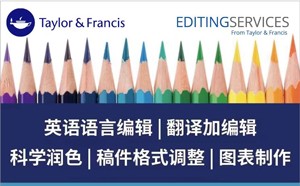






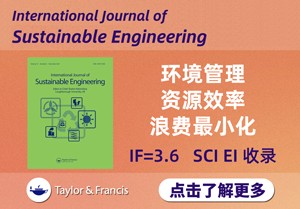
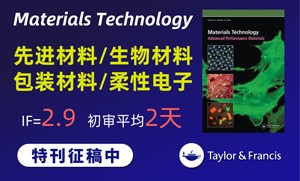
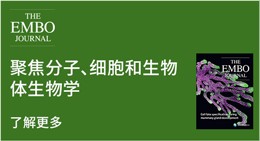
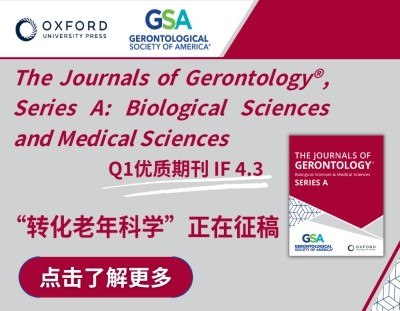
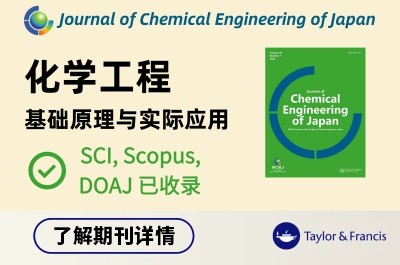



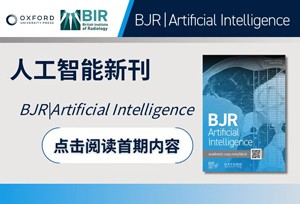




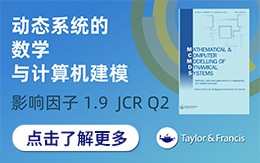



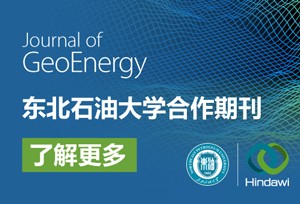
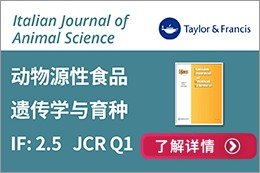














 京公网安备 11010802027423号
京公网安备 11010802027423号